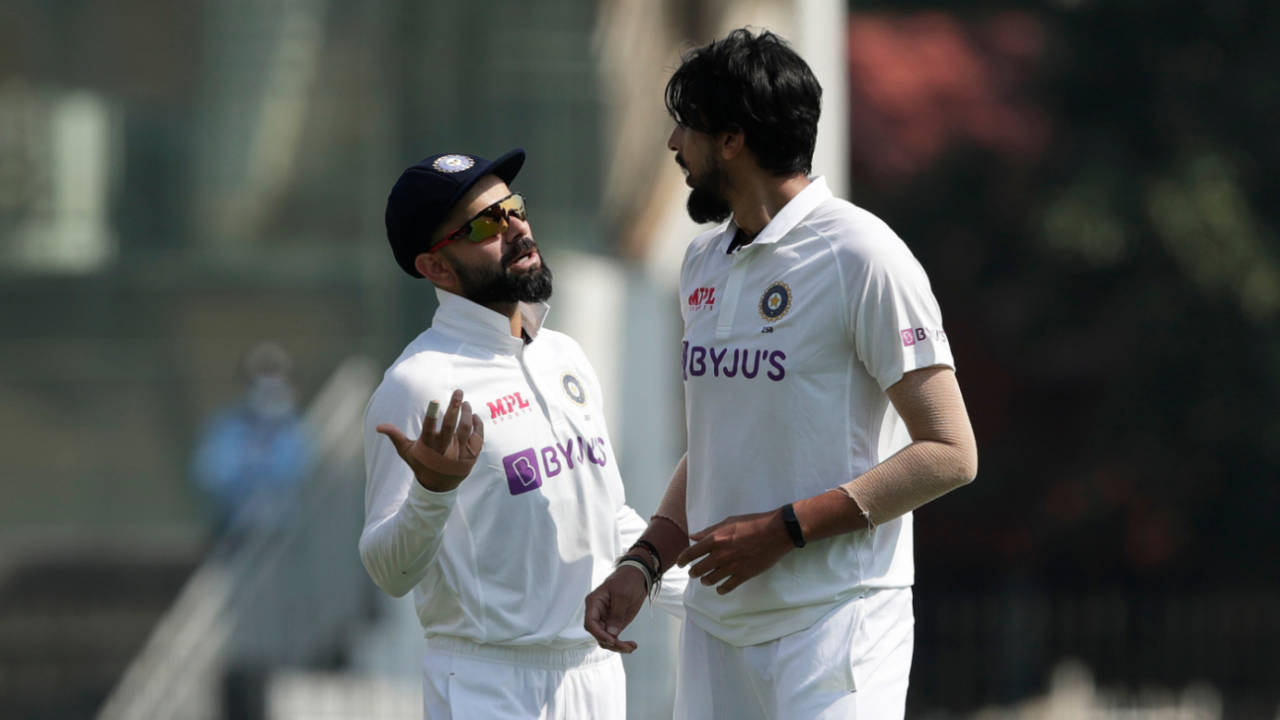With the
first Test of the series being India's
second home defeat in more than eight years, it had to be a rare event. While England played excellent cricket from the moment they won the toss, they needed some good fortune to go their way too. One hundred and sixty-six Tests have been played since the start of 2017. There have been results in 146 of those. Only five times has a team made fewer errors with the bat than India's 102 in Chennai to lose a Test. To lose 19 wickets to just 102 uncontrolled responses is terrible luck - Cheteshwar Pujara got out in the first innings despite being in full control of the shot - especially when England's first innings alone took 136 not-in-control responses to end.
Given the toss, the conditions and England's resolute batting, India had to work harder for their wickets. It's the opposite of
what happened in Australia when it was the visitors who enjoyed some luck in the last three Tests when the ball was in play.
Events in the final innings of the last two Tests in Australia and also in the recent game between Bangladesh and West Indies
in Chattogram might have had some impact on England's lack of declaration and fans' expectations, but the Test was - as most of them are - won and lost in the first two innings. Not only did India's first innings feature three unlucky wickets and some sensational catching, but the surge in the effectiveness of bowling was also huge.
England enjoyed at least a bonus day of batting before the ball started to misbehave at all, which is not how the other Tests in the aforementioned list played out. Four out of the five Tests mentioned earlier were typically low-scoring affairs, the fifth was between India and Afghanistan.
The penalty for batting errors went up considerably day three onwards in Chennai. The first innings took 13.6 false responses for a wicket to fall, the next three took 6.8, 5.7 and 4.1 respectively. Interestingly, the frequency of false responses didn't really follow a linear pattern: there was one false response every 10.7 balls in the first innings, and every 9.4, 4.9 and 8.5 balls in the subsequent ones. Arguably, England were batting for a declaration in the third innings and played a few shots too many, which might be reflecting in poor control percentage on the fourth day; or perhaps India saw something in how England tackled the misbehaving ball on day four, which gives them confidence for the rest of the series.
This points to two factors other than dumb luck. England could afford to bowl more attacking lengths because they had the runs on the board and a more responsive pitch to bowl on. While the economy rate went up, the errors were likelier to bring them wickets. Also, on more difficult pitches, you pay more for your errors. And this pitch got really difficult after the first two days. This was perhaps the kind of pitch that MS Dhoni used to rail against because it made the toss crucial, especially when Anil Kumble had retired and he had just Harbhajan Singh as the settled spinner.
This is not to say that this is the first time a team has enjoyed good luck in Test cricket. India did so in Australia. England did so when they were in India last time, winning three tosses and having to induce fewer false responses for a wicket, but this time they backed it up with the big runs to make any slice of luck became significant.
This time around, England are more determined to grind India out if they get to bat first, which shows in their squad composition. India are missing a key bowler: with a complete and relentless attack in the past, India could contain teams to 450-500 instead of the 578 England got here. Also, India are towards the end of a long season, which began with the IPL and carried into the gruelling tour of Australia. In the absence of
Ravindra Jadeja, the fitness of the other bowlers will continue to be tested should England win the toss on a similar pitch again.
Good examples of how India negated the toss disadvantage by restricting the opposition to 400-450 include the
Mohali Test against Australia in 2013, the
Mumbai and
Chennai Tests against England in 2016, and the
Ranchi Test against Australia in 2017. They will be hoping they get at least
Axar Patel back, whose batting will allow them to play a more attacking spinner in
Kuldeep Yadav. That might mean Washington Sundar might have to sit out despite his batting hand in the last Test, but when playing a spinner at No. 7, you are looking more at his bowling than batting.
Virat Kohli's press conference after the first Test betrayed a hint of annoyance at questions looking for any larger issue with the team. Kohli himself made just nine mistakes when he batted, and was out two times. The team knows they were in a tough situation, the kind they have made look easy in the past.
Should they lose the toss again and find the pitch to be similar - the latter is less likely to happen - India will ask for better control from their bowlers and a little bit more luck when they bat in the first innings. For the first time in four years, India have been properly challenged at home. The next three Tests will make for fascinating cricket.

